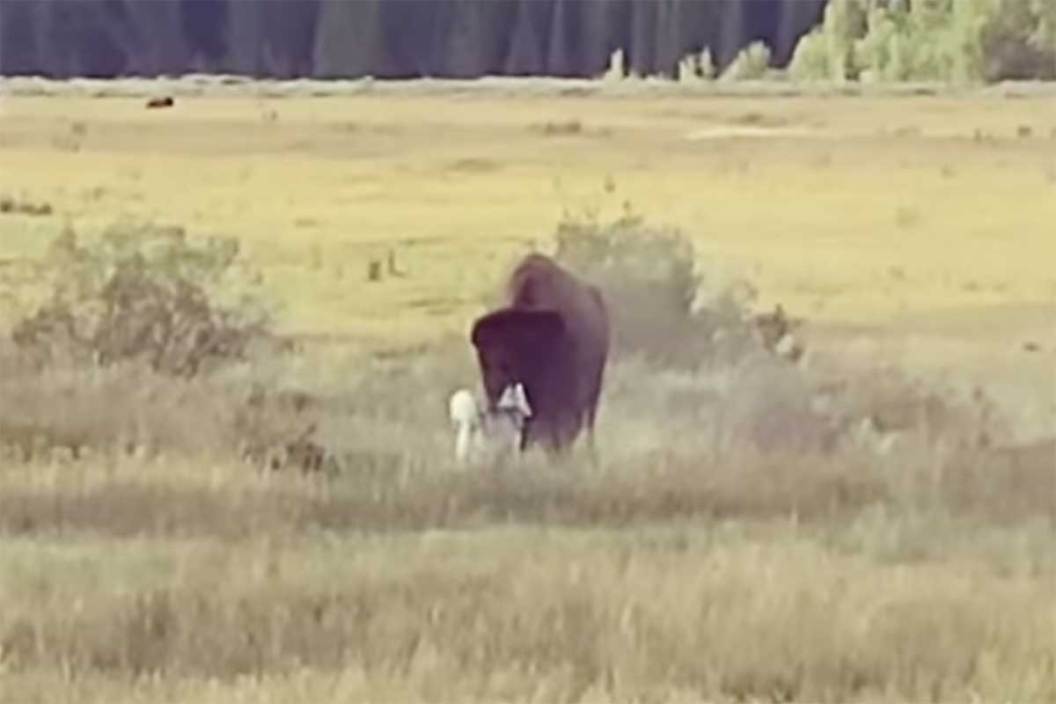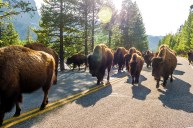Pets and wildlife generally do not mix, and a recent video from Grand Teton National Park shows us exactly why it's so important to keep them away from each other whenever possible. The video recently posted to the Instagram account TouronsofYellowstone (and recorded by Matty Deehan) shows a scary interaction between a Siberian husky and a large bison. It's the perfect example of why dogs should not be off-leash in national parks, and why parks place restrictions on and limit where they are allowed. Deehan wrote in the caption, "Dog owners didn't have their dog on a leash in GTNP while observing a wild bison herd. Needless to say, the husky's instinct kicked in. The massive bison was being a bison."
View this post on Instagram
What a nerve-wracking clip! The husky goes right under the bison's head towards its hooves, and the bison was not having any of it. Like a riled-up, gigantic land mammal would be expected to, he charges at the dog. Huskies are pretty agile and fast canines, and the dog was able to get out of the way. However, the interaction did not stop him from running some laps around the bison, further pestering it.
National Parks have quite a few rules regarding visitors and their pets, which are clearly in place for everyone's safety. The TouronsofYellowstone social media account points out that in Yellowstone, pets have to be on a leash at all times and it can be no longer than six feet. While at the park, they are required to be physically controlled. They are not allowed in many areas, including boardwalks, hiking trails, backcountry, or thermal areas.
Visitors can not tie their pets up anywhere, and must not leave pets unattended at any point. The park also requires that the owner provide them with appropriate food, shade, water, and ventilation. And of course, pet owners must clean up and dispose their dog's waste. These are common sense, typical pet owning requirements, and anyone who can't follow them probably shouldn't own one in the first place. Even if it's not ideal, leaving your pooch at home may be best for everyone's safety.




